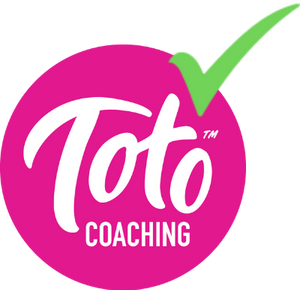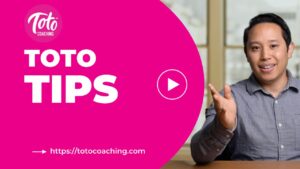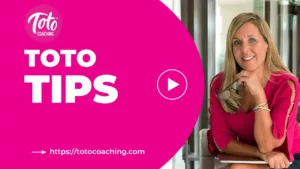The top menu bar is an important part of web design. This article explains what the top menu bar is and why it’s important for websites.
Watch this video or read the article below
![]()
Transcript
Wait, didn’t we say the main menu was already at the top?
Yes, but a top menu is another optional menu space that usually sits on top of the main menu, at the absolute top of the window. A top menu, also referred to sometimes as a top bar, may be a different color than the main menu, or simply sit at the top of the page.
You can place it elsewhere, but that’s not common. Top menus generally do not have drop downs, just links to individual pages or posts.
The top menu is also usually shown in a smaller font than the main menu, because although it’s on top, it’s more of a secondary, utilitarian menu that doesn’t need to be noticed until the visitor needs to do something on your website besides shop. For example, your top bar might have links to log in. view your cart, find a location, search, or customer service.
Other top menu links could be your social media channels, phone and email link, address or directions if you have a physical location, things important enough to show at the very top of every page to make it easy for customers to find when they need to.
Let’s go over this a little more in detail
The Aesthetic Distinction
The top menu, often referred to as a top bar, is not just functionally distinct but also aesthetically unique. Designers intentionally employ different color schemes to visually set it apart from the main menu, to create contrast. Despite its high position, the top menu has a modest appearance, presenting itself in a smaller font. The small font highlights its supporting role, patiently waiting until visitors need more than basic site navigation.
The picture below distinctly displays the main menu and the top menu. The main menu has a white background, whereas the top menu has a pink background.

Functionality: Streamlined and Utilitarian
In terms of functionality, the top menu takes a different approach than the main menu. Usually without dropdowns, it features direct links to specific pages or posts, embodying a streamlined, practical design. This simplicity ensures that the top menu efficiently serves its purpose without unnecessary decorations, catering to users who seek quick and direct access to key actions.
Real-world Scenarios
Putting Theory into Practice
Practicality defines the top menu’s role, showcasing links for actions users may need at any moment—logging in, viewing their cart, finding a location, performing a search, or seeking customer service. This ensures that essential functionalities are always just a click away, contributing to a seamless and efficient user experience.
Social Links, Contacts, and More
Beyond immediate actions, the top menu acts as a gateway to vital information. Social media links, quick contact options, and physical addresses find a home in this strategic space. These elements, crucial for user accessibility, are elevated to top-of-the-page prominence, enhancing the overall user experience.
Below is a sample of a website with social media links on the top-menu.

Top Menu and Brand Consistency
Consider the top menu an extension of your brand. Aligning its aesthetics with your brand’s colors and style creates a cohesive visual experience. This refined style reinforces brand identity, making the user experience not just functional but also memorable.
Users should navigate your site as if they are turning the pages of a well-designed book—they know what to expect, and each turn reveals something in line with the overall narrative.
Let’s break it down with some examples:
Color Harmony
If your brand palette consists of calming blues and greens, your top menu should reflect these colors. For instance, a health and wellness brand with a top menu featuring tranquil blues and fresh greens. This not only looks pleasing but also resonates with the brand’s identity, creating a sense of coherence.
Font and Typography
Consider the fonts used in your logo or other brand materials. Bringing these into the top menu reinforces your brand’s character. For instance, a modern and sleek tech brand might use clean, sans-serif fonts in its top menu to maintain a contemporary vibe.
Logo Integration
Incorporating your logo into the top menu is crucial. It makes the whole site look connected. Think of it as the book cover—it should be prominently displayed, reminding users of the brand they are engaging with. Apple, for instance, seamlessly integrates its iconic apple logo into the top menu of its website.
Consistent Imagery
If your brand uses certain images, add them carefully to the top menu. For example, an outdoor adventure brand could include subtle nature-inspired graphics in the menu background, enhancing the thematic consistency.
Responsive Design
Ensure that your top menu maintains its aesthetic appeal across different devices. A seamless transition from desktop to mobile maintains the brand experience, no matter how users access your site.
Mobile Responsiveness
The top menu’s significance extends to mobile responsiveness. Its design must seamlessly adapt to varying screen sizes, ensuring a user-friendly experience across devices. The challenge lies in maintaining functionality and clarity within a smaller space without compromising the user experience.
While the top menu holds immense potential, it comes with challenges, notably the delicate balance between offering essential information and avoiding clutter. Too many things in the top menu can confuse users and make the site harder to use. The key lies in prioritization, identify the most critical links and information users are likely to seek in the top menu. Keeping it concise and relevant ensures that users can quickly find what they need without feeling overwhelmed by too many choices.
As a web designer, don’t underestimate the top menu; it’s a strategic tool that enhances user experience and ensures your visitors find what they need, precisely when they need it.
Don’t settle for a boring, hard-to-read menu that blends into the background. Sign up for a Toto Coaching class today and learn creative ways to make your menu visually engaging and functional
This is the Toto way.

Read More Tips!
About the Author
Are You Searching the Internet for Help Building Your Website or Making it Better?
We are here to help you!!
Check out the entire DIY Website Building Course
where we walk you through building a website
from Start to Finish!
What are you waiting for? Let's get your website built!!
Not sure yet? But still wondering how to learn web design? Try a few lessons for free!
Sign up for a no-commitment free trial. You will be given access to two of our actual website building class lessons. One lesson is a shorter and more simple lesson, and the other is a longer, more involved lesson so that you can see the types of lessons we offer and you can get a feel for our coaches and what you will learn.
What are you waiting for? Let's get your website built!!


